Denimhunters is reader-supported. If you buy after clicking a link on our site, we may earn a commission.
In a World of Reproductions, the Tellason Coverall Jacket is a True-Blue Original
The world of heritage denim is rooted in classic workwear styles that debuted in the two decades or so following the Second World War. Heritage denim brands are pulled almost irresistibly towards these well-worn designs.

It’s exceptionally rare to see a brand break with convention and, in the process, create a new icon that can stand shoulder to shoulder with the ubiquitous classics.
Tellason did this, capturing lightning in a bottle with their Coverall Jacket, which debuted in 2011 and almost immediately gathered a cult following among denimheads.

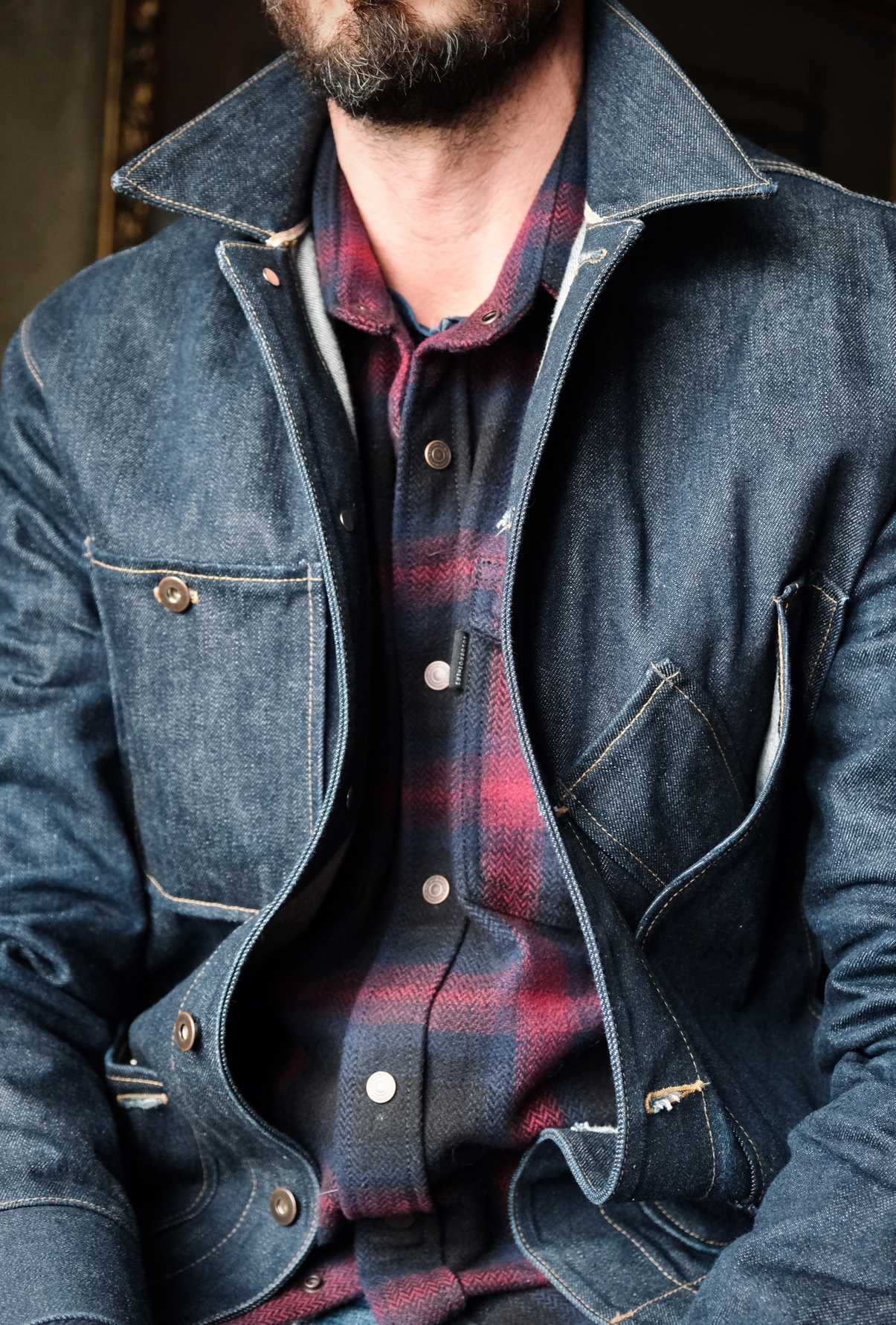
What is behind Tellason’s Coverall’s initial success and its deep and lasting footprint in the selvedge scene? I wanted to find out, so I moved my other denim jackets to the back of my closet and hung my 16.5 oz. Tellason Coverall next to the door.
For the last four months—since Year 3 of the Redline Rally kicked off on June 1, 2024—the Coverall has been my only denim jacket. I’ve grown so fond of it that it may earn a permanent spot on that hook by the door.
With each passing day, it’s become more obvious what has driven denimheads to beat a new well-worn path to Tellason’s front door.
The Coverall is available in a wide range of fabrics and colours, either with or without a wool-blend lining. Our favourite is the unlined 16.5 oz. version, but, before ordering, consider the full range of options.
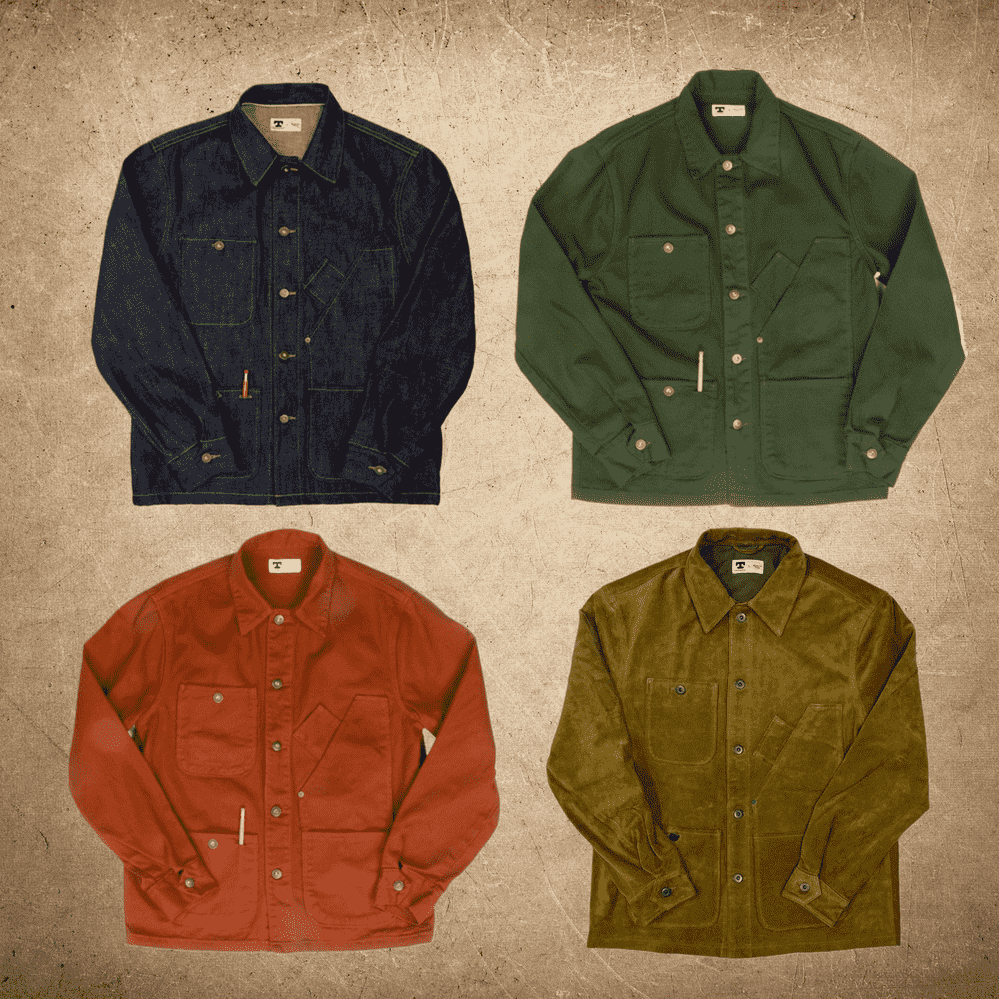
The Birth of an Icon: How the Coverall Took Shape
In 2011, Tellason founders Pete Searson and Tony Patella got a call from the guys at Smith & Butler (a since-shuttered rugged goods shop in Brooklyn). At the time, Tellason was still a very young brand. They produced their first pairs in 2008, but they had quickly been picked up by retailers in selvedge hotspots on both coasts, including Smith & Butler.
The Tellason retailers encouraged Pete and Tony to venture into what was, at the time, virgin territory for their brand: selvedge denim jackets. Then as now, the market was dominated by versions of popular denim jackets first produced by Levi’s and Lee, but the guys in Brooklyn wanted to shake things up with an entirely new design.


They shot a few ideas back and forth, and the first version of the jacket debuted in the Brooklyn shop a few months later. Inspired by dustbowl-era denim chore coats, it drew from a deeper and older well of American workwear than other selvedge jackets being produced at the time.
Many of the jacket’s most iconic features were present in the first iteration: the divided pocket at the right hip, and the capacious heart-side pocket large enough to hold a folded-up newspaper combined with the smaller angled eyeglasses pocket.


A year later, when the term for the collaboration ran out, Pete and Tony tweaked the design slightly, exchanging the rounded collar for a pointed one and adding two more pockets—another chore pocket on the hip, and a smaller concealed pocket on the inside of the jacket. The design has remained the same ever since.
The only noteworthy change came in 2017, when Tellason’s selvedge supplier, the legendary Cone Mills, announced they would be closing their doors. The three proprietary denims milled for Tellason by the American mill were replaced with three new proprietary denims from Japan, milled for the brand by Kaihara.

Since then, the jacket has been an absolute bedrock piece for the brand. Available in a broad range of weights, fabrics, and colours, it is the first piece that many denimheads think of when they think of Tellason.
After wearing one for four months, it’s easy to see why.
How Many Pockets Do You Need?
What most immediately sets Tellason’s Coverall apart from other selvedge denim jackets? The pockets. There are seven of them in total (counting the divided hip pocket as two): six of them on the front of the jacket, one on the inside.

If you asked me four months ago how many pockets I need on a denim jacket, I’d probably have said anything more than two is unnecessary, and anything more than four is too much. My experience with the Coverall has made me entirely rethink this.
For the first few weeks that I wore it, the pockets remained almost entirely empty, but slowly, bit by bit, they started to fill up. I now find myself using all of them.
The divided hip pocket (originally designed to keep mobile phones from sliding around), helps keep things I need to access quickly in their place. My keys live on one side of the divide and my clicker (for the gate at the end of the drive) on the other.

There’s enough space left over to fit the dog’s tennis ball at the top of the pocket.

The other hip pocket holds a bag of dog treats and my phone. In the slanted chest pocket (designed to hold eyeglasses), I have a back-up supply of dog-mess bags. In the inside pocket, I keep a few pens and my electronic cigarette.
The chest pocket usually holds my headphones and any small items I’ve managed to pick up on my journeys out of the house (receipts and whatnot).
I may use the hip pockets more, but the chest pocket is no less essential. It balances the coat. Without it, the Coverall would capsize and sink.

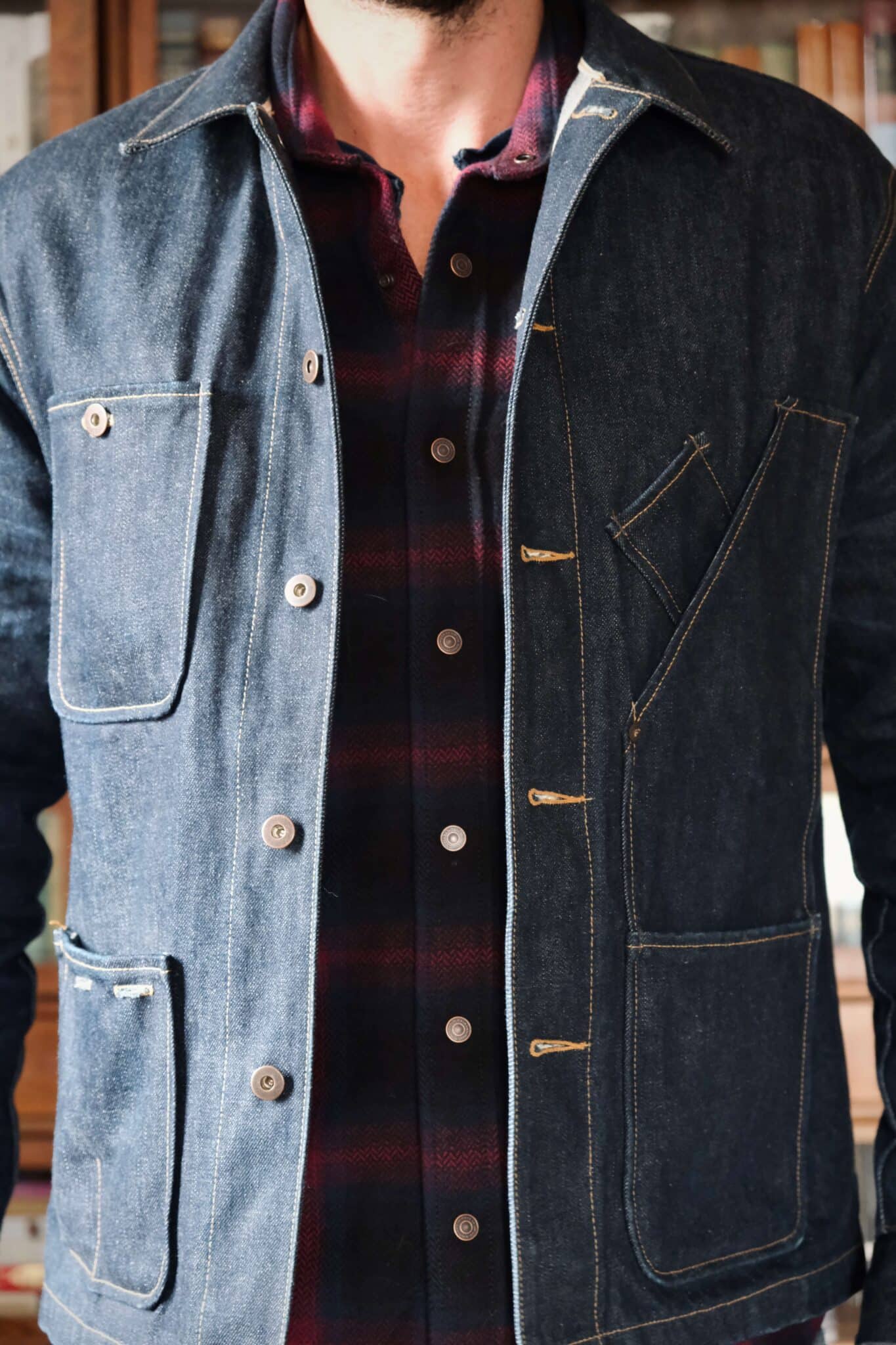
Finally, there’s the newspaper pocket (large enough to fit a folded-up newspaper). I’ve had all manner of things in there, from a baseball cap and a beanie to a paperback, a dog leash, and even a bottle of wine. It’s a catch-all with a now-you-see-it-now-you-don’t ease of use.

The newspaper pocket is far and away the jacket’s best feature. It really comes into its own when travelling. There’s simply no better pocket for valuables or a passport. You’d have to turn me upside down and shake me violently by my ankles to get anything to fall out of it.
With a riveted reinforcement on the newspaper pocket and leather-backed buttons, the pockets are not just for show. If you’re using the Coverall as a work jacket, you can use it as roughly as you want.

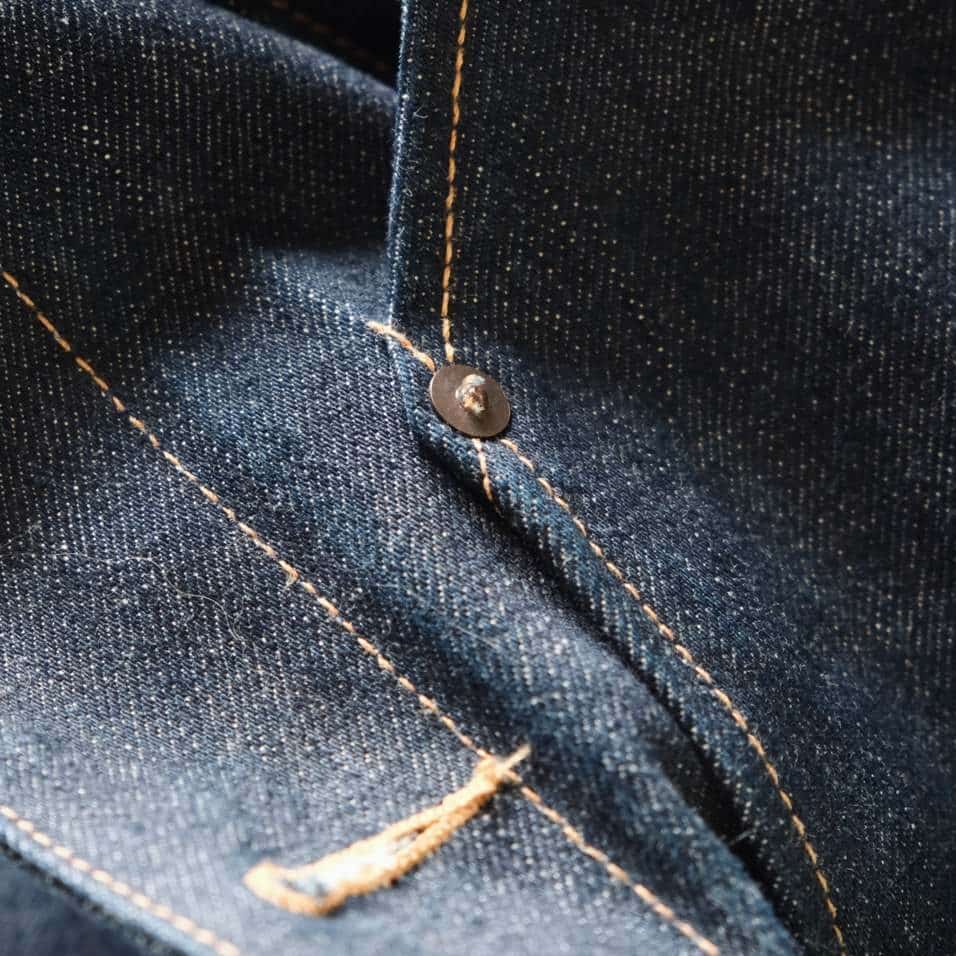
A clear cousin of the classic chore coat, the Coverall is more than up to the task, whatever that task might be. However many pockets you think you want or need, take my word for it. Seven is just enough.
The Perfect Fade Foundation
For as long as Tellason continues to produce the Coverall, the jacket will to be an easy choice for those who want something that’s both classic and radical. If it does ever go extinct, it will likely be remembered as both an era- and brand-defining piece.
With its stand-alone style and mile-long track record of beautiful fades, Tellason’s Coverall could easily command a higher price. Both the unlined 16.5 oz. version and the unlined 12.5 version cost only $250, but it would still be a popular choice at a considerably higher price point.
Few who purchase the jacket leave it at the back of the closet. It’s just one of those pieces that get worn a ton, and the more it’s worn, the more is revealed of the true potential of the Coverall and the 16.5 oz. Kaihara selvedge it’s made from.
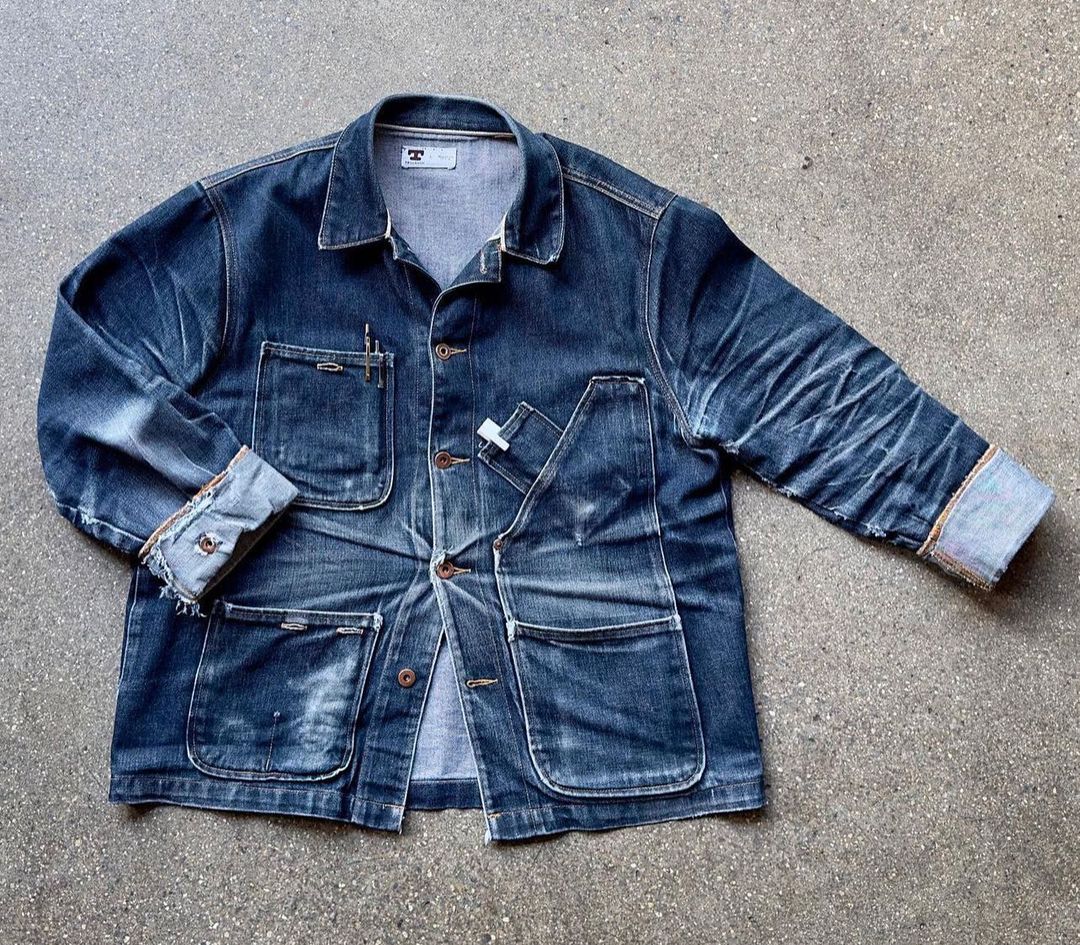
Thanks to its easy marriage of utility and style, it’s easy to stack up wear days. For this reason (combined with its unbeatable value), faded examples are not difficult to come by.
Unsurprisingly considering its track record, we’ve seen quite a few of these in the Redline Rally. Especially in its heaviest iteration, the jacket seems to attract serious blue-collar faders from around the world.


Bryan Haley (aka @sir_bryanj), a welder from the UK, has put his 16.5 oz. Coverall through hell in the Redline Rally, wearing it every day at work, letting it rest only on weekends and bank holidays. The gruelling schedule led to some inevitable (but beautiful) repairs.

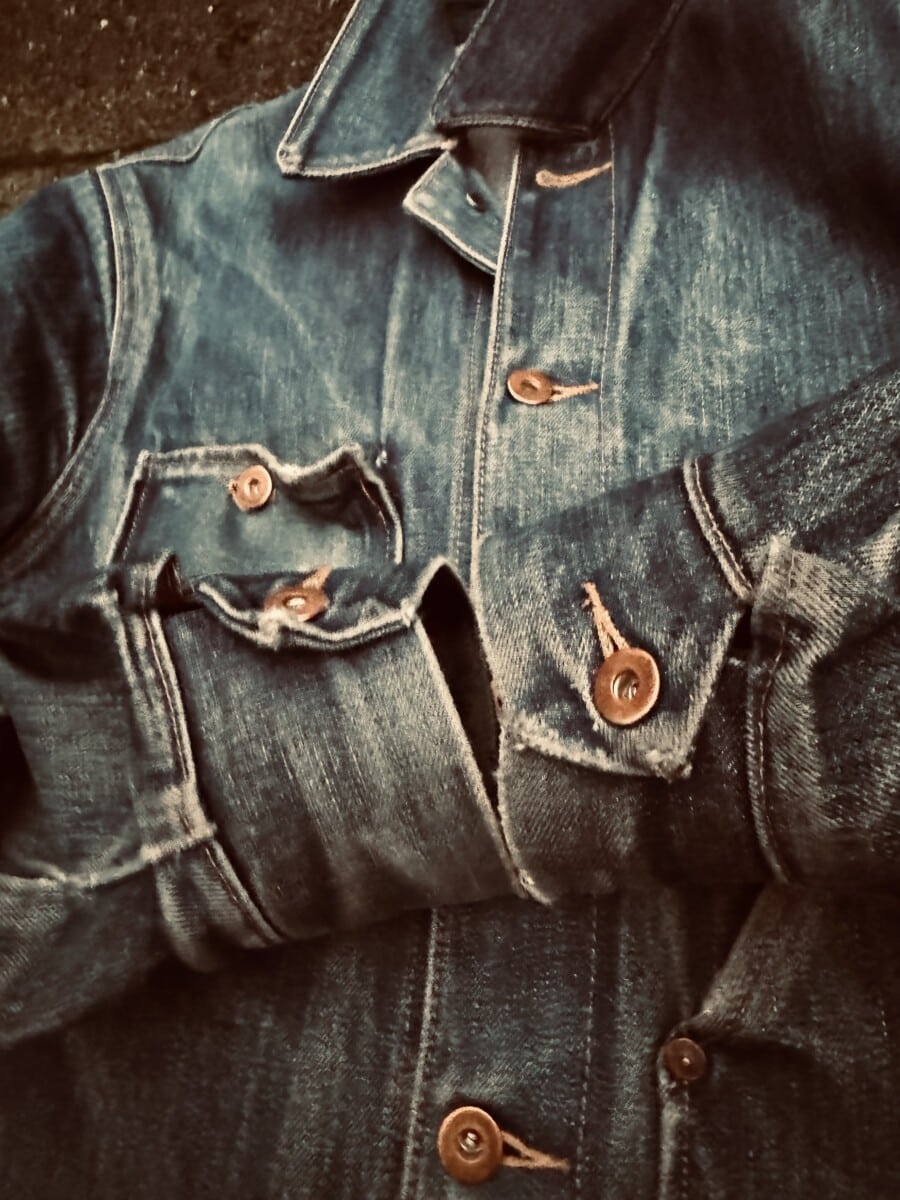
Steve Farmer (aka @lovogrett), a German K-9 handler, brings a slightly gentler touch to his Coverall, but only slightly. His work sees him outdoors with his dogs nearly every day, hiking and scrambling in the forests around his home. When he’s not enjoying the great outdoors, you can find him (and his coverall) at the pub or in the mosh pit.


For our money, these are the best-faded versions of the jacket we’ve ever seen. Bryan’s overall fades and carefully executed repairs and Steve’s vivid highs and lows make our hearts sing. They’re both doing full justice to the jacket. This is what it looks like when high-level faders meet their match.
I’m wearing my Coverall in Year Three of the Redline Rally. I may be a full lap of the track behind Steve and Bryan—they’re both competing in the Re(Pair) arm of the competition—but I’m inspired by what I’ve seen from them. It may take me a little longer to produce fades like theirs, but I’ll get there in the end.
First-Hand Fit
If you’re thinking about adding either your first (or a new) selvedge jacket to your collection, this one has our full-throated endorsement.
We’ve been recommending it for years, and now we can make that recommendation based not just on the Coverall’s reputation but also on our first-hand experience. As we’ve long suspected, it’s every bit as good as advertised.

It has elbowed out a space for itself at the very top of my jacket rotation (pushing aside some much more expensive pieces in the process).
Add one to your collection and your experience will likely be similar. It’s so practical and so stylish that you’ll want to take it all the way to the end of the line.

When selecting your size, remember that the Coverall is designed to be more practical than fashionable. It is cut generously across the chest and shoulders, with wide sleeves and a long body. This makes it perfect for larger gents. For the rest of us, it is an ideal layering piece.
If you want to wear it over tees or other lightweight shirts, you can size down for a slim fit. If you’re planning to wear it with heavy flannels or sweatshirts, true to size will likely be a good choice. Either way, check the measurements carefully.
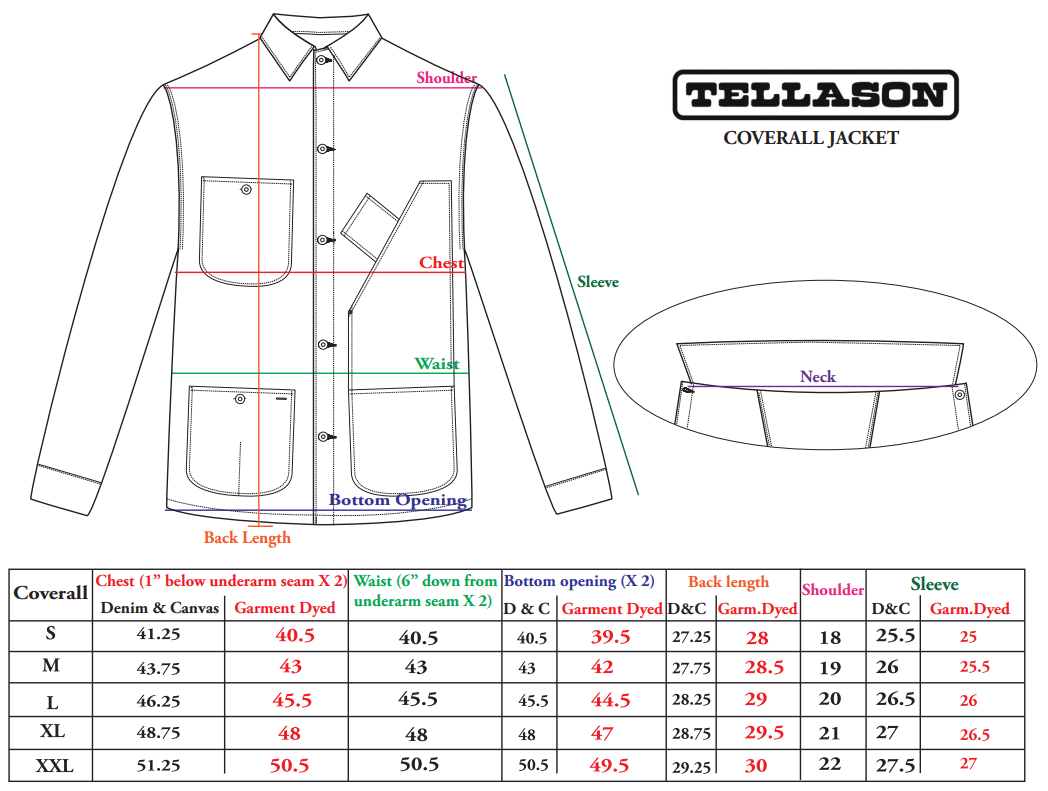
All of Tellason’s denims are thoroughly sanforized. The differences in sizing between when the jacket is brand new and after it’s been washed are negligible. Soaking before wearing is not necessary, but it’s still recommended.
Pete and Tony are always working on new versions of the Coverall. Their favourite was a double-indigo selvedge canvas one they did a few years back.
They’ve been hot on the trail since they got to the end of the roll—if you want to be the first to know if they manage to track down more of that fabric, make sure you’re subscribed to their newsletter.
Try Tellason On for Size
The Coverall is definitely our favourite jacket in Tellason’s line-up, but your tastes might pull you in an entirely different direction. Check out their full range of jackets here.
To keep up to date with what we’re wearing and watching, subscribe to our newsletter here.
The post Pocket Rocket: Tellason Coverall Review appeared first on Denimhunters.
DENIM and PATCHES sourced this post originally published on this site